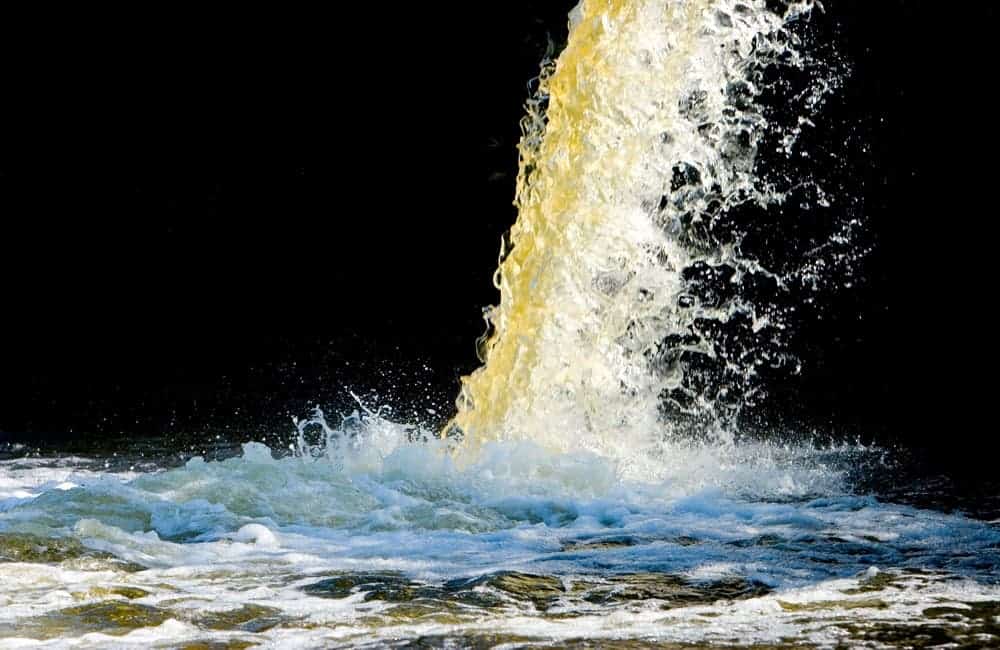The good news is that wastewater testing is indeed showing its capability of detecting diseases spreading silently in the community. The bad news is that diseases are indeed showing up.
Polio was largely eradicated in the US, thanks to a vaccination campaign started in 1955. But every once in a while, an isolated polio case does pop up — except this time, it doesn’t seem to be an isolated case. The CDC recently announced a polio diagnosis in an unnamed patient a few days ago; the first polio case in the US since 2013.
Officials said no other cases have been detected. But wastewater testing tells a different story.
The idea behind testing wastewater is not that new, but it’s gained more attention during the COVID-19 pandemic. The idea behind it is straightforward: for every case of a certain disease you detect, there may be plenty others you fail to see. But the virus (or bacteria) will show up in their stool. So if you have sufficient pathogen spread in a community, you can test the wastewater and detect it. You won’t know who exactly has the viruses, but you can know the virus is spreading through the community. This is exactly what’s happening now: wastewater is showing that polio is already spreading throughout New York.

This was not entirely unexpected after the initial case. The New York patient was left paralyzed by the virus — something which only happens in about 1 in 200 cases. CDC officials were suspecting the virus may already be spreading, and this seems to confirm their fears.
“Polio is very contagious, and an individual can transmit the virus even if they aren’t sick,” the New York State Department of Health said in a news release today. The virus spreads easily via a fecal-oral route through poor hygiene and sanitation. The virus transmits through direct contact with an infected person or contaminated food or water. “Symptoms, which can be mild and flu-like, can take up to 30 days to appear, during which time an infected individual can be shedding virus to others,” the health department added.
Wastewater sampling also offered officials another tantalizing clue — the virus that infected the man in New York (who had not been vaccinated) carries the same genetic signature that was identified in wastewater testing in London and Israel. It’s not clear where the virus originally came from.

Also, the hypothesis that the virus is spreading around has been confirmed by genetic sequencing. The kind of polio the man in New York has is linked to a polio vaccine that hasn’t been used in the US since 2000. Essentially, this type of vaccine (and oral vaccine) relies on weakened polioviruses to prime the immune system and make it create protective antibodies. In rare instances, if these viruses circulate in people who have not had the vaccine and/or have a weakened immune system, they can revert to a form that can make unvaccinated people sick. Neither the US nor the UK has used this vaccine for years, so it’s still not clear where the virus could have come from.
To make matters even more mysterious, the poliovirus found in sewage samples in New York and Jerusalem seemed too weak to truly cause paralytic polio, so it’s not clear where and how the virus became strong enough to cause the illness. CDC researchers are now turning to stored samples of wastewater to see if they can piece together when the virus evolved in the community.
New York officials were quick to point out the protection that vaccination offers against polio.
“Polio is a dangerous disease with potentially devastating consequences,” New York State Health Commissioner Mary Bassett said in a statement. “In the United States, we are so fortunate to have available the crucial protection offered through polio vaccination, which has safeguarded our country and New Yorkers for over 60 years. Given how quickly polio can spread, now is the time for every adult, parent, and guardian to get themselves and their children vaccinated as soon as possible.”
But vaccination rates aren’t that high in New York. Just 60% of the people in Rockland County, where the polio case was reported, are vaccinated against polio. This is a pocket of low vaccination rates, which was also seen when the county struggled with a measles outbreak in 2019. In fact, the statewide vaccination rate is at just 79%
This goes to show just how hard it is to truly get rid of diseases. The US was officially declared polio-free in 1979, but if vaccination rates fall, a resurgence is still possible. Even now, there’s no cure for polio, but it can be prevented by a vaccine. It tends to affect mostly children, causing muscle weakness, and in the most serious cases, it can cause permanent disability and death.
The Global Polio Eradication Initiative (GPEI), an initiative created in 1988, emphasized the importance of maintaining high immunization rates and wastewater surveillance.
“It is vital that all countries, in particular those with a high volume of travel and contact with polio-affected countries and areas, strengthen surveillance in order to rapidly detect any new virus importation and to facilitate a rapid response,” GPEI said. “Countries, territories, and areas should also maintain uniformly high routine immunization coverage at the district level and at the lowest administrative level to protect children from polio and to minimize the consequences of any new virus being introduced.”
For many Americans, the word ‘polio’ won’t mean much. But for much of the 20th century, it was the most feared disease in the country, and a resurgence of polio is nothing to scoff at — especially when it compounds on already existing problems. It’s essential that we keep this potential outbreak in check and contain it as quickly as possible.


